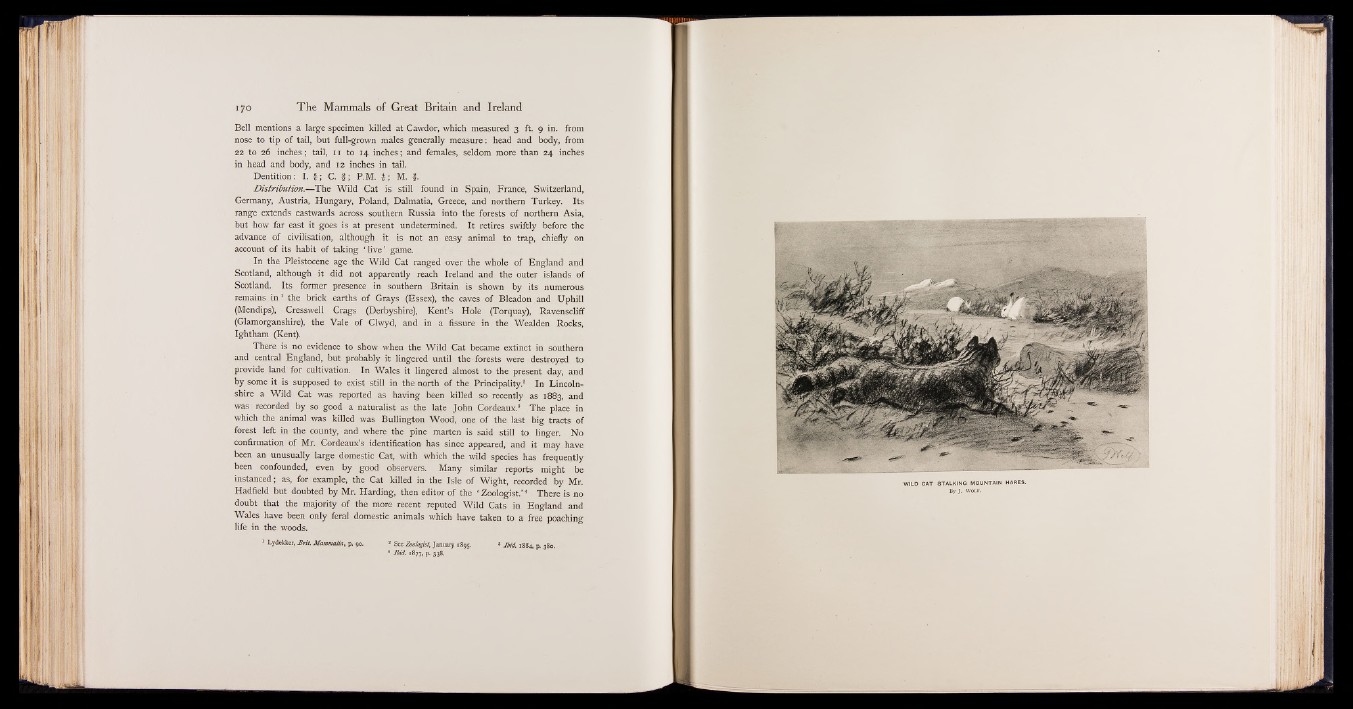
Bell mentions a large specimen killed at Cawdor, which measured 3 ft. 9 in. from
nose to tip of tail, but full-grown males generally measure: head and body, from
22 to 26 inches; tail, n to 14 inches; and females, seldom more than 24 inches
in head and body, and 12 inches in tail.
Dentition: I. $; C. f ; P.M. $; M. #.
Distribution.—The Wild Cat is still found in Spain, France, Switzerland,
Germany, Austria, Hungary, Poland, Dalmatia, Greece, and northern Turkey. Its
range extends eastwards across southern Russia into the forests of northern Asia,
but how far east it goes is at present undetermined. It retires swiftly before the
advance of civilisation, although it is not an easy animal to trap, chiefly on
account of its habit of taking ‘ five’ game.
In the Pleistocene age the Wild Cat ranged over the whole of England and
Scotland, although it did not apparently reach Ireland and the outer islands of
Scotland. Its former presence in southern Britain is shown by its numerous
remains in 1 the brick earths of Grays (Essex), the caves of Bleadon and Uphill
(Mendips), Cresswell Crags (Derbyshire), Kent’s Hole (Torquay), Ravenscliff
(Glamorganshire), the Vale of Clwyd, and in a fissure in the Wealden Rocks,
Ightham (Kent).
There is no evidence to show when the Wild Cat became extinct in southern
and central England, but probably it lingered until the forests were destroyed to
provide land for cultivation. In Wales it lingered almost to the present day, and
by some it is supposed to exist still in the north of the Principality.2 In Lincolnshire
a Wild Cat was reported as having been killed so recently as 1883, and
was recorded by so good a naturalist as the late John Cordeaux.® The place in
which the animal was killed was Bullington Wood, one of the last big tracts of
forest left in the county, and where the pine marten is said still to linger. No
confirmation of Mr. Cordeaux’s identification has since appeared, and it may have
been an unusually large domestic Cat, with which the wild species has frequently
been confounded, even by good observers. Many similar reports might be
instanced; as, for example, the Cat killed in the Isle of Wight, recorded by Mr.
Hadfield but doubted by Mr. Harding, then editor of the ‘ Zoologist.’ 4 There is no
doubt that the majority of the more recent reputed Wild Cats in England and
Wales have been only feral domestic animals which have taken to a free poaching
fife in the woods.
1 Lydekker, B rit. Mammalia, p. 90. * See Zoologist, January 1895. » Ibid. 1884, p. 380.
* Ibid. 1877, p. 338.